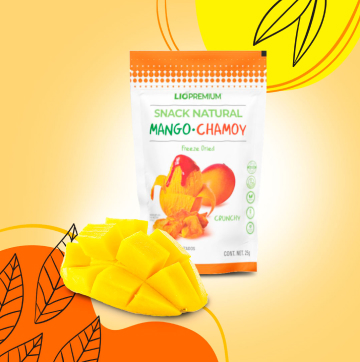
Freeze-drying is the process with the greatest benefits in terms of conservation. Many researchers use this method to keep their samples and products in optimal conditions for long periods; however, it is also a process that in some markets is novel or even little known.
This generates an endless number of questions, of which we have selected the 10 most common questions to clarify them:
Question 1
Why freeze-drying and not dehydration?
Lyophilization, unlike other drying processes, does not involve heat. For example, vitamins are destroyed at 60°C and proteins deteriorate at 90°C, drying by heating may not be a good option.
Freeze-drying is based on sublimation, that is, through this physical process, the water is extracted from the sample, bringing up to almost 0.5% of residual humidity, with which we obtain a very stable product, with a long storage period without requiring a chain. cold and without loss of organoleptic, nutritional or therapeutic properties as the case may be.

Question 2
Why is it important to know the temperature at which my sample freezes?
The freezing temperature of the sample is known as the eutectic point, it is where the sample is 100% frozen. This temperature helps us to select the correct freeze dryer. To achieve a good lyophilization we must consider that our equipment must be at least 15°C colder than the sample. This will prevent the sample from thawing and ruining the final product.
Question 3
What is the secret of a good lyophilization?
Freezing, this is the most important stage of lyophilization, the success of lyophilization depends on it. A well frozen product will be a well preserved product.
Question 4
If freezing is the most important thing, how should I freeze my sample?
As we have already said, freezing is the most important thing. In this regard we must consider 2 points:
one- The shape matters, that is, the way we freeze our sample can help us freeze-dry more efficiently. For example, tilting our freeze-drying flask can be of great help.
2- Speed matters, if I freeze quickly, for example with liquid nitrogen, I will have a very compact ice cube and this could slow down the process.
On the contrary, when freezing slowly, that is, using a deep freezer, we will obtain a porous ice cube that will facilitate the movement of water molecules out of our product.

Question 5
How long does it take to freeze-dry my sample?
The freeze-drying time depends on several points:
- Sample volume
- frozen sample
- Nature of the sample
- Sample composition
When lyophilizing for the first time, the humidity and elapsed times must be measured step by step in order to set up the appropriate protocol for each sample, therefore, it is not easy to determine a time with an unknown sample.
Our new End-Zone accessory determines the point at which freeze-drying ends and sends us an email to notify us, this can save resources when setting up the protocol.
Question 6
I already have a vacuum pump, can I use it?
The recommendation is to use the Labconco high displacement pump, however as long as you have a pump with a minimum displacement of 117 lpm it could be useful depending on the capacity of the freeze dryer.
Question 7
My sample is diluted in acetone, can I lyophilize it?
At Labconco we have Teflon-coated freeze dryers, these are capable of withstanding the action of this type of solvent and others such as glacial acetic acid, etc. In addition, there are special vacuum pumps for these situations. This is a unique feature of Labconco.
Question 8
Even though I freeze my sample well and my collector is 15°C colder than the eutectic point, the final product always remains wet. What could be happening?
The nature of the sample changes even with the way we are handling it, there are some structures that have a very complex molecular framework and this makes drying difficult since the water molecules can be very dispersed from each other.
We can mention 2 ways in which this problem can be solved:
one- Regulate the vacuum pressure in the primary drying, to slowly extract the water. This will allow the water molecules to conserve enough energy to sublimate.
2- Programmatically increase the temperature of the sample in the secondary drying, to give the necessary energy to the water molecules to sublime.
Question 9
If I buy a 2.5L freeze dryer, can I put the same amount of sample?
In freeze-drying there is a very clear rule, use the equipment and accessories at 50%, that is, a freeze-dryer of this capacity will allow us to handle 1 to 1.5L of sample.
Question 10
I want to freeze-dry insects, how can I do it in a Labconco freeze-dryer?
The recommendation for this application would be the use of one of our tray drying chambers; some of these have a heating system to help with the secondary drying of this type of sample.


